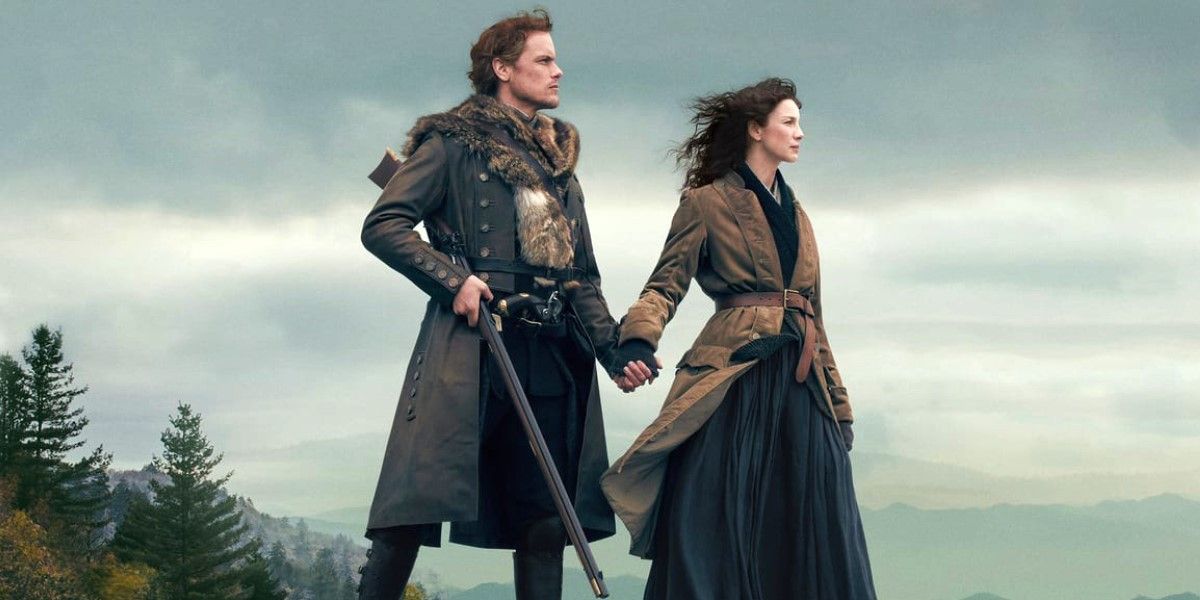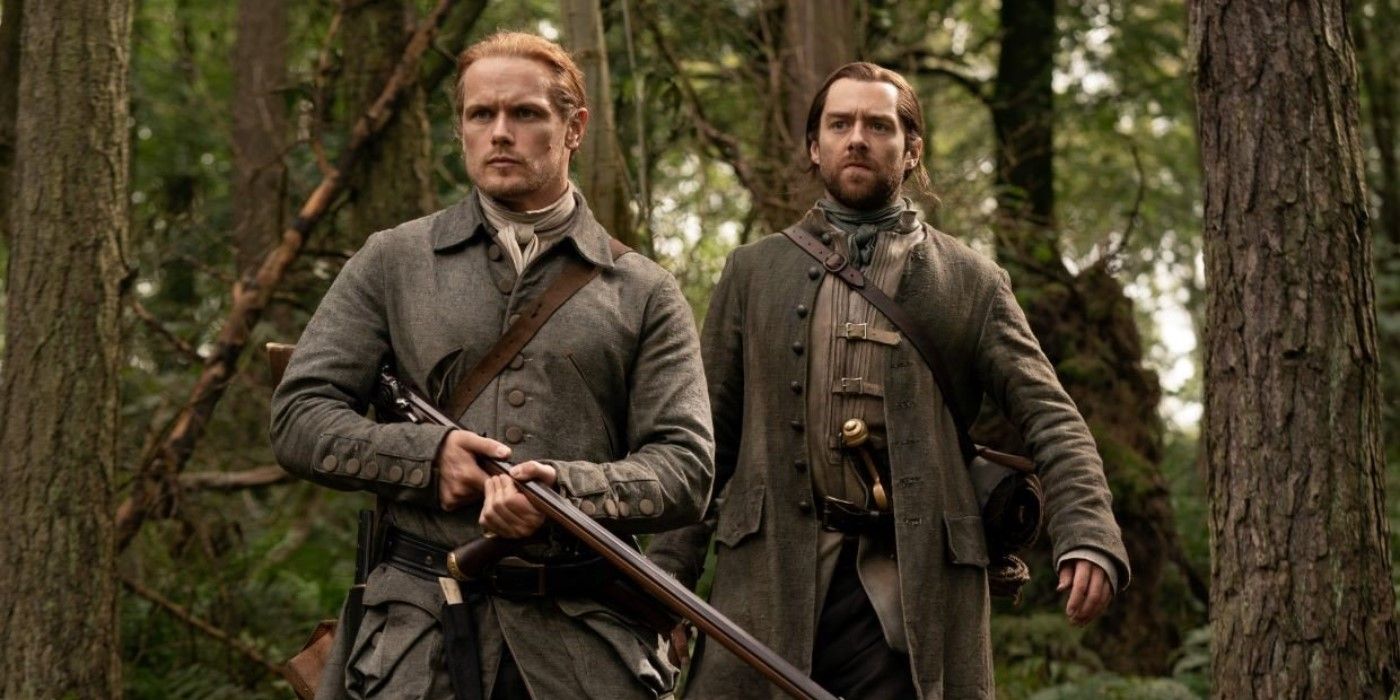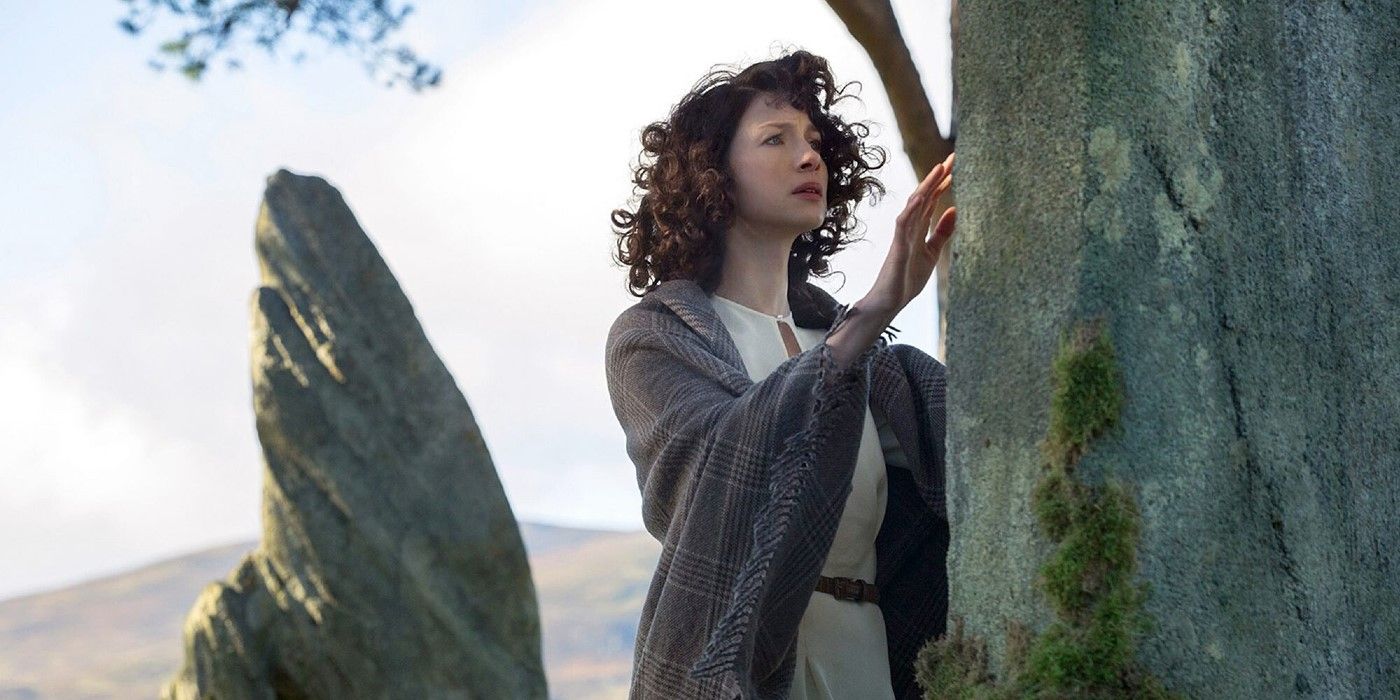This is a phrase said of many entertainment properties, but when it comes to Starz' Outlander, there really is something for everybody. The series is based on the bestselling novel of the same name by Diana Gabaldon, which was published in 1991 and earned that year's RITA award for best romance fiction. But don't let that categorization fool you. While Outlander has a romantic relationship at its narrative core, the now eight books and five seasons of the television show sample from multiple genres and combine them in unexpected and exciting ways.
Outlander's most vocal fanbase is made of up feminists who are interested in history, fantasy, or both. The series won acclaim in its first season for its excellent casting, smart adaptation choices, and effective use of the all-too-rare female gaze. It quickly developed a reputation for the frequent and incredibly steamy, yet elevated sex scenes between Caitriona Balfe as Claire Randall and Sam Heughan as Jamie Fraser. That the series follows the perspective of Claire puts all of the show's complicated sexuality in a unique light. But Outlander is more than just hot and heavy fantasy.
In many ways, Outlander is historical fiction more than it is romance, with deep threads about military conflict and medical advancement that run throughout. The premise is that Claire, a married World War II nurse, accidentally gets herself transported to 1740s Scotland, where she becomes entangled in some pretty thorny politics surrounding the Jacobite uprisings, as well as a love affair with a handsome Scottish warrior. The history that Outlander references is more specific, dense and based in fact than most straight-down-the-middle books about war. The same can be said about Claire's work as a nurse. The show is often graphic in its depiction of what women, who served as healers then and now, had to do to save a life, both in the 18th-century highlands and on the WWII battlefields. The action is so visceral and propulsive, viewers just sort of absorb the knowledge, and none of it ever feels like a lecture.
Of course, to get Claire back to the past, Outlander also has to play with time travel. There, too, the series relies on real-world inspiration. Claire moves through time thanks to Druidism, the ancient Celtic spiritual practice. By imbuing the world of Outlander with a mythology that sprung from the very location in which the story is set, Gabaldon (who also writes for the TV series) makes the fantasy elements feel more grounded and plausible.
The real magic of Outlander is that it's part pulp and part prestige, and it does that tightrope act better than most IP. If things feel too melodramatic or supernatural, audiences can wait five minutes until the show transforms back into a medical drama or a stiff upper lip academic discussion. And if audiences grow weary of the Scottish Highlands (which is unlikely, due to the gorgeous cinematography), they can rest assured they'll never spend too long in one location. Outlander happily skips across the map as often as it skips through centuries, whisking its heroes and its readers away to France, North America, and then some.
If you need yet another excuse to climb aboard the Outlander bandwagon, consider that Diana Gabaldon is the kind of author not many fandoms are lucky enough to call their own. She diligently publishes Outlander content on a regular basis; there are at least two more books in the series forthcoming, with part nine expected soon. If you're still spending ample time at home and want something that both speaks to the struggle of the present moment while also providing exhilarating escapism, Outlander is a sound choice, on the page and on the screen.



